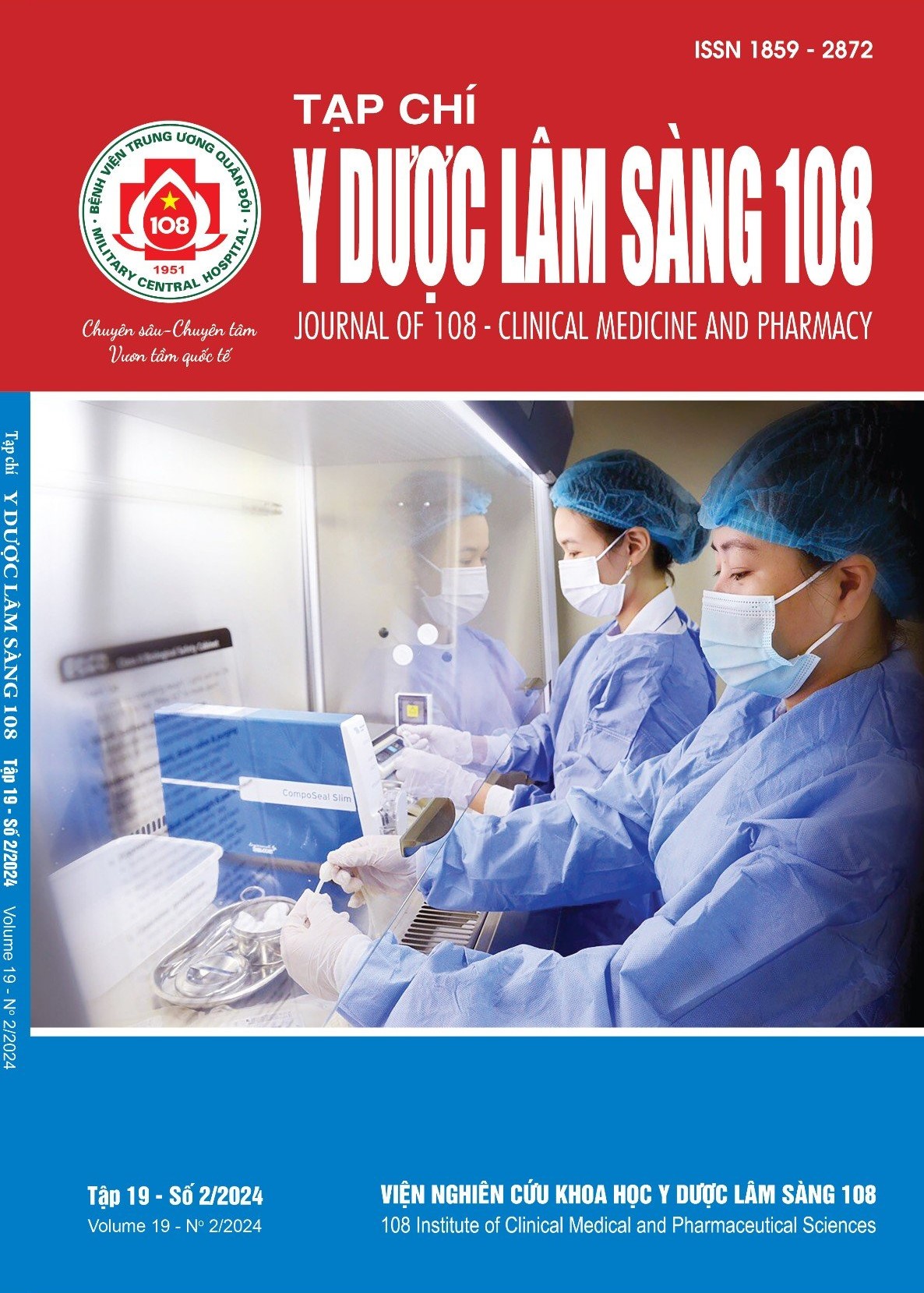Simultaneous cranioplasty and ventriculoperitoneal shunt for post-decompressive craniectomy hydrocephalus treatment after trauma: Experience at 103 Military Hospital
Main Article Content
Keywords
Abstract
Objective: To evaluate the outcomes of simultaneous cranioplasty and ventriculoperitoneal shunting in the treatment of hydrocephalus following traumatic decompressive craniectomy.
Subject and method: A retrospective study including 48 patients with hydrocephalus post-decompressive craniectomy, who underwent simultaneous ventriculoperitoneal shunt and cranioplasty from 01/2022 to 09/2023 at 103 Military Hospital, with a minimum follow-up period of 30 days. Patient characteristics, clinical data, and complications were collected and analyzed. Result: The average age was 54.35 ± 14.95, with a male/female ratio of 2.2/1. The average time from decompressive craniectomy to surgery was
2.46 ± 0.85 months. 85.4% of patients had a cranial defect larger than half of a hemisphere. The overall complication rate post-surgery was 16.87%, including subdural and epidural fluid collection, hemorrhage, and postoperative seizures. There were no cases of infection, shunt system issues, or need for reoperation. Conclusion: Simultaneous ventriculoperitoneal shunt placement and cranioplasty appear to be an effective and safe method for treating cranial defect and hydrocephalus following traumatic decompressive craniectomy, with a low complication rate. However, due to the lack of a control group for comparison, these conclusions should be considered within limitations and further validated through additional research.
Article Details
References
2. Licata C, Cristofori L, Gambin R et al (2001)
Post-traumatic hydrocephalus. J Neurosurg Sci 45(3): 141-149.
3. Heo J, Park SQ, Cho SJ et al (2014) Evaluation of simultaneous cranioplasty and ventriculoperitoneal shunt procedures. J Neurosurg 121(2): 313-318.
4. Yang XF, Wang H, Wen L et al (2017) The safety of simultaneous cranioplasty and shunt implantation. Brain Inj 31(12): 1651-1655.
5. Schuss P, Borger V, Güresir Á, Vatter H, Güresir E (2015) Cranioplasty and ventriculoperitoneal shunt placement after decompressive craniectomy: Staged surgery is associated with fewer postoperative complications. World Neurosurg 84(4): 1051-1054.
6. Meyer RM, Morton RP, Abecassis IJ et al (2017) Risk of complications with simultaneous cranioplasty and placement of ventriculoperitoneal shunt. World Neurosurg 107: 830-833.
7. Jung YT, Lee SP, Cho JI (2015) An Improved
one-stage operation of cranioplasty and ventriculoperitoneal shunt in patient with hydrocephalus and large cranial defect. Korean J Neurotrauma 11(2): 93-99.
8. Carvi Y, Nievas MN, Höllerhage HG (2006) Early combined cranioplasty and programmable shunt in patients with skull bone defects and CSF-circulation disorders. Neurol Res 28(2): 139-144.
9. Shih FY, Lin CC, Wang HC et al (2019) Risk factors for seizures after cranioplasty. Seizure 66: 15-21.
10. Nguyễn Trọng Yên (2019) Hội chứng "vạt da chìm” sau phẫu thuật dẫn lưu não thất - ổ bụng trên bệnh nhân đã mở sọ giải áp: Nhân 4 trường hợp. Tạp chí Y Dược lâm sàng 108 14(6).
 ISSN: 1859 - 2872
ISSN: 1859 - 2872
